|
Winter Wellness: Aligning with Nature's Restorative Rhythms
The bleak winter landscape beckons us to slow down. Trees skeletal, bare of leaves, remind us to conserve our energy. Hibernating animals sleep through winter blizzards. Nature is dormant, and the rhythm of the season is rest. Somewhere deep inside we all know that our wellbeing depends on our ability to live in harmony with the natural rhythm of the Sun, the Moon, the Earth, and the turning of the seasons. The artificial nature of modern homes and workplaces allow us to override our diurnal rhythms and the promptings of our body clock. Of course, lighting, heating, phones, and computers are all valuable assets in our lives, but our health can suffer when we are out of synch with the natural rhythm of the natural world. The winter blues, lethargy, frenetic activity followed by overwhelm and tiredness, are all symptoms of this imbalance. In this article we’ll look at ways that we can realign our energy with the prevailing energy of the season, respecting our need to rest, whilst at the same time topping up our energy levels so that we’re able to cope with the demands and opportunities of the season... Read more of this OM Yoga article...
0 Comments
Have you got a secret ambition to write a yoga book? Is there a yoga book that you’d love to read which hasn’t yet been written? And perhaps you have a sneaking suspicion that only you could write that book. I’m Jilly Shipway, yoga teacher and author of three bestselling yoga books. In this article I’ll share with you my top tips for kickstarting your writing practice and helping you to realise your dream of becoming a published yoga author.
As autumn turns to winter, do you feel a grey cloud hanging over you and a sense of dread at the onset of the shorter, darker, cooler days? If so, help is at hand to fight off those winter blues and avoid descending into the winter slump. In this article I’ll outline 5 Seasonal Yoga inspired meditations and mindfulness practices that will lighten up your mood and bring sunshine into the darkest of winter days.
Hanging out in graveyards and sitting meditating upon a corpse, is probably not, I’d guess, how you’ll be spending Halloween. Macabre as it may seem, the Buddha encouraged his monks and nuns to go to the charnel ground to receive a lesson in impermanence by contemplating the body of someone who had recently died. The charnel ground is the place where the dead are cremated; in Buddhism it’s considered to be a sacred space where the conditions are right for transforming fear into awakening. Of course, although it’s unlikely that you would go to such extremes in your own meditation practice, the gentle discipline of our yoga practice is to learn to turn toward unpleasant emotions, rather than push them away...
Read more... If your yoga practice has lost its sparkle, then working with the seven chakras will bring back the magic! In this article, I’ll show you how the chakras can illuminate your yoga practice with a rainbow of colours.
There are seven chakras along the midline of the body, which are spinning vortices of psycho-spiritual energy that form part of a network of subtle energy within the human body. The chakras are wheels that connect the world of spirit and matter and provide an interface between the heavenly and earthly realms. The chakras were imagined into being by the ancient yogis as an aid to meditation. I find that the chakras come to life when I visualise them as seven different coloured flowers along the length of the spine, from the tailbone to the crown of the head. As we picture each chakra’s flower, that chakra-flower opens and blossoms. Here are 7 ways that you can introduce some chakra magic into your yoga practice. Read more of this Om Yoga article... Sometimes life can get lackluster and feel like it's missing that magic ingredient. We feel like a dark cloud is hanging over us, and long to see the Sun appear from behind the clouds. If you feel like your life is being lived out in monochrome, then working with the seven chakras can restore your life to its full spectrum of rainbow colors.
The yoga sages of ancient times were said to have acquired magical powers (siddhis) that included invisibility, superhuman strength, knowledge of past and future lives, and exceptional states of consciousness. Nowadays, trainee yoga teachers are warned against the dangers of being seduced by these extraordinary powers, and are encouraged to view them as a worldly distraction on the path rather than a final destination. The chakras were imagined into being by the ancient yogis as an aid to meditation. There are seven chakras along the midline of the body, which are spinning vortices of psycho-spiritual energy that form part of a network of subtle energy within the human body. The chakras are wheels that connect the world of spirit and matter and provide an interface between the heavenly and earthly realms. The chakras provide us with a treasure trove that we can explore to create a magical and awe-inspiring life. How can we tap in to this powerhouse of energy and magic today? Below is a simple guide to the seven chakras and their potential to magically transform your life. Read more of this Llewellyn article... A life without creativity is a life lived in monochrome. Engaging in playful, creative activities is an act of subversion in a society where the norm is to live our life on autopilot. Many of us feel too constrained by the demands of everyday life to follow our passion and reach our full creative potential. In this article I’d like to show you how you can work with the seven chakras and restore your life to its full spectrum of rainbow colours.
Creativity boosts our health and wellbeing. It helps us to problem solve and find creative solutions to life’s inevitable roadblocks. Creativity connects us to our self and to others. A life lived creatively is one filled with moments of wonder and awe. So, what do we do when inspiration runs dry? The painter’s canvas remains blank. Words refuse to flow from the writer’s pen. A chef’s culinary creations lack the magic ingredient. Or a parent can’t find the words for making up a bedtime story to soothe a fractious child. When life has lost its lustre, we can turn to the chakra system to get our creative juices flowing and bring life back to life again. Read more of this Aspire Magazine article... The Spring Equinox is a solar festival celebrated when the length of day and night are equal. It is the ignition key for the year, and from here the energy of the year really revs up. This year, as we approach the Spring Equinox, and begin to emerge from a global pandemic, I have found using the seasonal meditation questions more poignant and more relevant than ever.
As the days get longer and warmer, between now and the Summer Solstice, normally, my focus would be on pushing projects out into the world, to make the most of this short-lived period of fertile energy, During the growing season, whatever we unite our energy with will expand and grow, so, I would be asking question such as:
I found working with the Spring Equinox meditation questions this year has helped me to get in touch with just how daunted and at the same time how hopeful I feel about this work of rebuilding better over the months ahead. Here are some meditation questions that will help you to stay calm, grounded, and guided by your inner wisdom, as you face the challenges of the coming season:
To find out ways of working with the meditation questions see the blog post: How to Use the Seasonal Meditation Questions. See also: Spring Equinox Yoga Practice Spring Equinox Page Spring Equinox Celtic Connection Page For the past few days I've been using the Spring Equinox yoga practice, from the Yoga Through the Year book, as my early morning yoga practice. I've found the practice the perfect antidote to the jitters that arise as we prepare, here in the UK, for a gradual emergence from lockdown restrictions, and it's also great for calming the restlessness and agitation brought on by the surge of growing season energy that comes with the changing season. The Spring Equinox yoga practice has been designed to encapsulate the excitement and anticipation that comes with the arrival of spring. In the practice poses such as the Runner’s Lunge reflect a sense of being poised for action at the start of a race. The magic of leaves unfurling, blossoms opening, and the world waking up after its winter sleep is reflected in the flowing sequence of Child’s Pose into Upward-Facing Dog and back again. The exuberance of spring is expressed through poses such as Downward-Facing Dog with leg lifts. We choose the balancing pose Warrior 3 to mirror day and night being perfectly balanced at the equinox. Stabilizing poses such as Chair Pose help us stay grounded as the energy of the year revs up. I found the affirmations in the practice therapeutic and perfect for aligning my intentions with the energy of the coming growing season. The three affirmations are:
Spring Equinox Yoga Practice Overview
1. Standing Like a Tree. 2. Warrior 1 × 6 on each side. On final time stay for a few breaths with arms raised. 3a. and 3b. Warrior 3 variation × 4 on each side. On final time stay for a few breaths. Affirmation: I create balance in my life. 4. Chair Pose. Stay a few breaths. 5. Cat to Cow Pose × 6. 6. Runner’s Lunge Pose. Stay for a few breaths. Affirmation: Inner wisdom guides my actions. 7. Downward-Facing Dog Pose with leg lifts × 4 on each side. 8. Child’s Pose to Upward-Facing Dog × 6. Affirmation: I open to new possibilities. 9. Child’s Pose or Knees-to-Chest Pose. Rest for a few breaths. If you are short of time, finish your practice here. 10. Calming Cloud Meditation The appearance of the first snowdrop reminds us that winter won’t last forever and spring is on its way. Although we haven’t quite shaken off winter this little flower heralds the beginning of the new growth cycle. Below is a piece of writing I wrote following a period of meditation upon a snowdrop. Meditation upon a Snowdrop You are the first snowdrop. You bring light into the dark winter landscape and a hint of spring to come. Your love of Earth and Sky has blossomed into a moon-white flower, danced by wind, rain, and snow. Over the winter, your heart, a bulb, is cradled in the womb-like embrace of Mother Earth. Your roots dream into the darkness of the soil; mother and child as one. And then a quickening, something inside of you stirs, a baby kicks inside the womb, and you send up green shoots to meet the light. You are the first snowdrop. As winter turns to spring the world is waking up and coming back to life again. The Winter to Spring yoga practice, in the Yoga Through the Year book, is inspired by the first spring flowers opening into blossom, heralding the arrival of spring. The practice begins with the Blossoming Hands exercise. Blossoming Hands The Blossoming Hands exercise frees up the breathing, establishing a healthy, relaxed breathing pattern. It also helps maintain suppleness and flexibility of the hands. It has a subtle opening effect on the body’s posture and energizes and lifts the mood. It’s a great way to start a yoga practice. The practice could then be themed around the idea of opening and closing. It can also be used anytime as a standalone practice. Close your eyes and draw your awareness inward (or if you prefer, keep your eyes open). Begin to gently open and close your fingers. Make a gentle fist, like a flower closing back to bud. Then spread the fingers like a flower opening. Continue to slowly and gently repeat this opening and closing movement. Once you have established a rhythm to the movement, bring your awareness to the natural flow of your breath. As you observe the breath, notice how it corresponds to the opening and closing movement of the hands. Next in the practice is Flower Arms: Flower Arms Stand tall, feet hip width apart. In your mind’s eye picture your favourite spring flower. Now place fingertips on shoulders, elbows out to the side; relax shoulders down away from ears. Inhale and open arms out to the side, like a flower opening. Exhale and bend arms, bringing fingertips back to shoulders, like a flower closing back to bud. Repeat 6 times. Below is an aide memoire for the rest of the Winter to Spring Yoga Practice, which incorporates a theme of opening and closing to encapsulate that end-of-winter feeling and coming out of hibernation. The yoga flow from Child’s Pose to Upward-Facing Dog reflects this sense of waking up to spring after a long winter sleep. The full instructions for the Winter to Spring Yoga Practice can be found in chapter nine of the Yoga Through the Year book.
This year, when so many people have faced such dark and anxious circumstances, it is more important than ever to celebrate the Winter Solstice and the return of the light. The Winter Solstice, on December 21st in the Northern Hemisphere, marks the shortest day of the year. We have arrived at the point in the year when the darkness has expanded to its fullness and must now bow down to the sun. It is a time of hope and a time to dream the life you wish for into being. The sun, reborn at the Winter Solstice, is like a new moon: the first few days of the moon’s waxing cycle the new moon is not yet visible in the sky; in the same way, at the winter solstice, it is not immediately evident that the light has returned. Winter stretches out before us, the sun is low in the sky and casts long shadows, and summer still seems a far-off dream. However, although it is not apparent to us yet, the earth’s energy has shifted from darkness to light, moon to sun, yin to yang, water to fire, inner to outer, and from contemplation to action. Below are some Winter Solstice meditation questions (from chapter eight of the Yoga Through the Year book) to help you to prepare for the dawning of the light at the solstice:
More than ever we all need hope to dispel the darkness and gloom that has been so prevalent during this pandemic year. We are reminded at the Winter Solstice that the light will return, spring will come, green shoots will appear, and life will blossom again. So, over the coming weeks create a space in your life, a cradle, ready for the Sun to be reborn at the Winter Solstice. What is being reborn in you at this time?
See Also: How to Use the Seasonal Meditation Questions Finding Wisdom in the Darkness Here in the Northern Hemisphere we are only a few weeks away from the Winter Solstice, on December 21st. Following the solstice the days will gradually begin to lengthen. However, we still have a few more dark, cold months of winter ahead. If you are looking for a way to bring warmth, light, and hope into the dark days of winter, then a good way to do this is to begin to work with the Winter Solstice meditation questions (chapter eight in The Yoga Through the Year book). Over the next couple of weeks I'll be sharing some of the meditation questions from the book with you, and making suggestions about how best to work with them. The darker half of the year, between the Summer and Winter Solstice, is not a good time for action, but it is a wonderful time to be incubating ideas, ready to send up green shoots when the sun returns and a new cycle of light begins, at the Winter Solstice. The meditation questions below reflect the contemplative nature of this time:
When you look back over the year, it is worth acknowledging that for everyone 2020 has been quite a year! During these turbulent, unprecedented times it is especially important to give yourself kindness and compassion. So, when you are considering what you have been incubating during the darker half of the year, do it with kindness and understanding, acknowledging your feelings about any losses or disappointments, and celebrating your successes, however small.
What have you learnt and what wisdom will you be taking into the new solar cycle? The restrictions imposed by the virus have taught many of us about patience, resilience, adaptability, and creativity as we experiment with new ways of doing things. If you are not sure about what you've learnt during this time, then take a few quiet minutes and trust your inner wisdom to come up with some answers. What will your spiritual focus be for the year ahead? Your spiritual focus for the coming year can be quite simple, such as remembering to tune into the natural flow of your breath; or remembering to mindfully savour the small joys of life; or to be kind to yourself and others. Whatever you choose, it can serve as a simple way of continually steering you in the direction of whatever is spiritually meaningful for you. I will be posting more guidance on using the Winter Solstice Meditation Questions over the next few weeks leading up to the solstice. See: How to Use the Seasonal Meditation Questions If you are reading this in the Southern Hemisphere then see: Summer Solstice page and Celtic Connections Summer Solstice page Touch is incredibly important to our sense of wellbeing, and since the pandemic, due to social distancing, many of us are suffering from touch hunger. So, what can we do about touch hunger? What solutions are there to this problem, that will see us through until we reach a time when it's safe to touch and hug our friends and loved ones again? Research has shown that exercise is a good buffer for touch deprivation. So, a session of yoga, a brisk walk, a bike ride, are all great ways of giving yourself a hug. Professor Merle Fairhurst has shown in her research that imagining touch can increase your sense of wellbeing. She has devised an exercise, to help people to reconnect with touch, by imagining a one to two-minute hug. She gets people to imagine the last hug they had, and then tells them to go ahead and wrap themselves up in long one or two minute hug, and she has found that by giving yourself that self-hug you’re releasing the same chemical compounds that are going to relieve stress. I love the idea that by giving yourself a hug, or by picturing hugging a loved one, that you can relieve stress. So, I've adapted this idea and created the Give Yourself a Hug Visualisation, which you will find below. It only takes a few minutes to do, so it's an easy way to introduce some happy hormones into your day. This visualisation is relaxing, it's a lovely way of sending love to loved ones, and of giving compassion to yourself. The Give Yourself a Hug VisualisationFind yourself a comfortable position, either standing, seated, or lying. Notice where your body is in contact with the floor or your support. Relax your shoulders down away from your ears, close your eyes, and soften your face with a half-smile. Become aware of the natural flow of your breath. Breathe in, and then gently blow the air out through your pursed lips. Go back to your normal breathing. Now, in your mind's eye picture someone whom you would like to hug, and have been unable to hug for a while. Visualise having a big, warm hug with them. Then, keeping this image of hugging in your mind, wrap yourself up in a self-hug. Maintain this self-embrace for between one and two minutes. When you are ready, release the hug. Notice how you are feeling now, both physically and emotionally. Once again, return to observing the natural flow of your breath. If you are short of time finish here. If you have more time you can repeat the Loving Kindness phrases for yourself and the person you've been imagining hugging. Begin by repeating the phrases for yourself, and then repeat them for your loved one (just substitute their name in the phrases). May I be safe. May I be happy. May I be healthy. May I live with ease. When you have finished repeating the phrases, return to observing the natural flow of your breath. Notice where your body is in contact with the floor or your support. Then, give yourself another hug, and, when you are ready, carry on with your day, taking these warm, loving feelings into whatever activity you do next today. I'm lucky that I've got my husband to hug, but at the same time I yearn for a hug with my daughter. She lives 150 miles away and due to the pandemic restrictions I've not been able to see her for a few months. I've found the hugging visualisation really helps me to feel close and connected to her, even if physical distance keeps us apart at present. If like me you sometimes find yourself welling up with tears when you do this visualisation, that is a signal to acknowledge how tough life can be at present, and to give yourself an extra big helping of love and self-compassion. During these difficult days this visualisation is a great way to boost your wellbeing.
Space scientist, Dr Maggie Aderin-Pocock, says that "Seeing the moon always soothes my nerves and helps me feel a little better". This month there will be a full moon and blue moon on Halloween. It's called a blue moon because it's the second of two full moons to occur in a calendar month. October 31st is also Samhain which is the festival that marks the end and beginning of the Celtic year.
Usually, at this time we have candlelit pumpkin lanterns and children dressed up in spooky outfits trick-or-treating door to door. Although, with the pandemic, probably not this year. The world is scary enough without adding anything extra! Halloween is a traditionally time for honouring the dead. This can be done through a simple ritual, such as lighting a candle for a meaningful person in your life who has passed on. This might be an ancestor, such as a dearly loved grandparent, or it could be someone who has inspired you and whom you feel a spiritual connection to, such as a writer, poet, painter, singer, political agitator, or yogini. In yoga the root chakra (muladhara) is associated with ancestral connections and a sense of tribal belonging. Below are some seasonal meditation questions focussing on the theme of honouring our ancestors:
Autumn is turning to winter now and the leaves are falling from the trees; the days are getting shorter and cold frosty mornings whisper that winter is on the way. One way to bring light into the darkness of winter and to escape our terrestrial troubles is to regularly take time to look up at the night sky. Dr Aderin-Pocock says, "All cultures throughout time have looked up at the night sky and they've found it a comfort." So, to soothe your soul and lift your spirits during this troubled time, remember this Halloween to look out for the blue moon, and I hope you find it a comfort.
See also: How to Use the Seasonal meditation Questions Stopping, Calming, Resting, Healing Planting Seeds of Hope Autumn to Winter Page Samhain Page Find more inspiring ways of connecting with the stars in my forthcoming book, Yoga by the Stars: Practices and Meditations Inspired by the Zodiac Today, walking by the river, showers of autumn leaves were falling from the trees and being carried along by the stream. The sun was shining through the trees and I had that I love autumn feeling. However, like many people at the moment I also feel a sense of apprehension at the thought of facing the winter ahead during a pandemic. Here in the UK the Covid restrictions we are living under change from week to week, and there is the impending threat of another lockdown hanging over us. Over the past couple of days, I've found comfort, amidst the gloom of world news, from reading through the Autumn Turns to Winter chapter in the Yoga Through the Year book, and working with the autumn to winter meditation questions. Although the autumn-to-winter period is not a good time for action, it’s a great time for incubating ideas and making plans for next year. Yes, of course there is uncertainty about what the future will hold, but it's still good to dream and envisage how you would like things to be- after all magic happens! Below are some meditation questions to help you visualise your plans and priorities for next year (Work, home, holidays, relationships, adventures, etc.):
When you answer these questions allow yourself to be bold and dream up a wonderful future. At the same time be aware of any worries and concerns that arise. Embrace both your fears and hopes and dreams with kindness and compassion.
See also: How to Use the Meditation Questions Stopping, Calming, Resting, Healing The Autumn to Winter page of this website And the Samhain page Here, in the Northern Hemisphere, we are entering the darkest phase of the year, until the sun is reborn at the winter solstice in December. The dark half of the year gives us an opportunity to pause, rest, and rejuvenate. Just as the oak tree stays alive over winter by stripping itself of leaves and using almost no energy, we too can look for opportunities during this autumn-to-winter period to enter a place of stillness and simply be utterly present in the moment. This year, during a global pandemic, as autumn turns to winter, it is more important than ever to stop, calm our system, to rest, and take the time out to heal. Below are some seasonal meditation questions which will allow you to consider how to create some healing space during the coming season.
The Autumn to Winter chapter in the Yoga Through the Year book has a yoga practice aimed at bringing light into the darkness and brightening up the dark days of autumn and winter. Sun imagery is used to lift the mood and shake off seasonal blues. The practice honours the autumn-to-winter urge to hibernate by including poses that draw the awareness inward, such as Standing Twist, forward bends, and Child’s Pose. To avoid the autumn-to-winter slump we include backbends to open the chest. Our yoga practice offers us many ways of lifting our spirits and lightening up the dark days of autumn and winter.
See also: How to Use the Meditation Questions Autumn to Winter Page Samhain Page Plant Seeds of Hope The Placing Thoughts on a Leaf Visualisation can be done at any time of year but is particularly good to do when the leaves are falling from the trees in autumn. It soothes a restless and agitated mind; it brings focus to the mind and quietens persistent, unwanted thoughts. It can be found on page 106 of the Yoga Through the Year book. It can be done sitting or lying down and takes about 10 minutes. The Placing Thoughts on a Leaf VisualisationFind yourself a comfortable position either sitting or lying down.
If you are sitting, establish an erect but relaxed posture. Begin by noticing any thoughts and feelings that are passing through your mind. Simply observe thoughts and feelings without judgement as they come and go. Now bring your awareness to sensations arising in your body. Notice which parts of your body already feel relaxed and where there is discomfort or tension. Become aware of the natural flow of your breath. Notice how your belly rises and falls with each in- and out-breath. Throughout the meditation maintain a background awareness of the natural wavelike flow of your breath. Now imagine that it is a sunny day and you are sitting under a tree on the riverbank, watching the river flow by. Shafts of sunlight stream through the trees and sparkle on the water below…The river is like a mirror reflecting blue sky, white clouds, and rippling trees. The wind whispers through the branches of the trees and blows autumn leaves onto the water …You watch the leaves, noticing their different shapes and colours as they sail by… Now once again return your awareness to noticing thoughts as they come and go in your mind. Imagine that as a thought arises you place it onto a leaf and watch the leaf float by. And then when another thought comes into your mind, place that thought on a leaf too and watch it sail away downstream. If your mind gets carried away by a torrent of thoughts and feelings, congratulate yourself for noticing this, and then simply begin again by placing the next thought that comes into your mind onto a leaf. If thoughts come into your mind that the meditation isn’t working or that you’re not doing it right, these are just thoughts, so just place them on a leaf too and watch them float by… We’re not trying to get rid of thoughts. You don’t need to push thoughts away. We’re simply observing the stream of thoughts passing through the mind and letting them float away in their own time. Now let go of placing your thoughts on leaves. Widen your awareness to take in the whole of your imagined river scene. What do you see? Notice shapes, colours, and textures. What do you hear? Use your five senses to picture the scene around you. Particularly, be aware of changes that herald the arrival of autumn. Enjoy the beauty of the place. Now let go of picturing the river scene. Bring your awareness back to noticing sensations in your body and where your body is in contact with the floor or support. Notice how you are feeling now and how the meditation has affected you. Become aware of sounds inside the room and sounds outside the room. Become aware of your surroundings and when you are ready, open your eyes. Take this peaceful, patient, accepting, and more spacious awareness into the next activity you do today. The Placing Thoughts on a Leaf Visualisation can be found on page 106 of the Yoga Through the Year book. See also: The Autumn Art of Letting Go Autumn Equinox Yoga Practice Autumn Page Autumn Equinox Page The tree in autumn provides the inspiration for the Yoga Through the Year book's Autumn Equinox Yoga Practice. We can imitate the wisdom of the tree by conserving energy over the coming autumn and winter months and letting go of unnecessary baggage. This process of letting go enables us to create a sense of physical and mental spaciousness in our lives. Letting go is about prioritising what’s important to us and clearing a space, both physical and psychic, to nurture and nourish the things that do matter to us. There is wisdom to be found in the fading beauty of autumn. In spring the newly formed leaf contains within itself the blueprint that prompts it to fall from the tree in autumn. The tree knows that to survive the dark, cold winter months it must conserve energy. Over winter, the fallen leaves rot, forming compost that in turn nourishes the tree. And when spring comes around, new buds unfurl into fresh green leaves. As the trees let go of their leaves, what do you wish to let go of this autumn? The global pandemic has thrown all our lives into confusion and uncertainty. As autumn arrives, many of us wish to let go of the fear, disappointment, and loss, that has been our companion during these unprecedented times. Our mindfulness practice reminds us that the first step of letting go, is to allow ourselves to fully experience the emotions that we are wishing to let go of. Along the lines of: what we resist persists. If we can allow ourselves to simply feel what we are feeling, then we can process those emotions, connect with their inherent wisdom, and begin the process of healing. However, if we bypass this stage of feeling what we are feeling, then letting go becomes pushing away, which in turn traps us in a cycle of persistent, unwanted thoughts and emotions. Feeling what you feel is warrior work! Your yoga and mindfulness practice can support you along the way. The Surrounding a Difficulty With Love Meditation, page 126-127. in the Yoga Through the Year book, will help you to develop the skills to tolerate and embrace difficult emotions more easily. This in turn will help you to build up courage and emotional resilience. You could also check out the audio mindfulness exercises on The Mindful Way Through Anxiety website. As we approach the autumn equinox there is a shift of emphasis from sun to moon, light to dark, action to contemplation, growth to dormancy, fruitfulness to composting, building up to letting go, and movement to stillness. Now is a good time to pause after the frenetic activity of the growing season and consider how best to recuperate, regenerate, and replenish your energy this autumn. Below are some meditation questions to assist you with the process of letting go this autumn. Autumn Meditation Questions on Letting GoIn preparation for winter the trees are letting go of their leaves.
A full set of Autumn Equinox Meditation Questions can be found in the Yoga Through the Year book. See also: The Placing Thoughts on a Leaf Visualisation Autumn Equinox Yoga blog post Autumn Page Autumn Equinox Page The tree in autumn provides the inspiration for the Autumn Equinox chapter's Yoga Practice, from the Yoga Through the Year book. We can imitate the wisdom of the tree by conserving energy over the coming autumn and winter months and letting go of unnecessary baggage. This process of letting go enables us to create a sense of physical and mental spaciousness in our lives. Letting go is about prioritising what’s important to us and clearing a space, both physical and psychic, to nurture and nourish the things that do matter to us. Today, I used the Autumn Equinox yoga practice, from the book, as my early morning yoga practice. It felt the perfect way to connect with the change of the season from summer to autumn. You begin the practice Standing Like a Tree, and picture a tree in all its autumn splendour. Then, later in the practice you evoke the image of the tree again as you hold Tree Pose (Vrksasana). Today, rather than picturing the beauty of autumn leaves, I pictured a tree in fruit. I've recently been walking in the Peak District, so my mind easily filled with images of wild apple and damson trees, and red-berried hawthorns; before I finally settled on the image of a rowan tree, with its rich orange berries, which grows nearer to home, in my back garden. As autumn arrives and the year winds down, nature takes steps to conserve energy and let go of that which is unnecessary; this yoga practice will enable you to begin that same process of conserving energy and sensory withdrawal (pratyahara). This is reflected in the practice with vinyasas such as Child's Pose (Balasana) flowing into Upward-Facing Dog Pose (Urdhva Mukha Svanasana), which generates that sense of moving from the sunny openness of summer, to the more inward, contemplative focus of the autumn and winter months ahead. In the practice we also use the Seated Forward Bend (Paschimottanasana), to help us imitate nature's autumn work of letting go. As you hold the forward bend you ask yourself the meditation question: In autumn, as the trees let go of their leaves, what do I wish to let go of? Today, in preparation for the Seated Forward Bend, I moved dynamically a few times, from Staff Pose (Dandasana) with arms raised into the Seated Forward Bend. As I did so I found myself instinctively using some meditation phrases from the Buddhist monk Thich Nhat Hanh: Breathing in I smile, breathing out I let go. I then shortened the phrase to Inhale: Smiling Exhale: Letting go Towards the end of the practice, we return to the fruitfulness of the season, repeating the affirmation, I welcome abundance into my life, as we rest in Supine Butterfly Pose (Supta Baddha Konasana). Then we conclude the practice in Knees-to-Chest Pose (Apanasana), contemplating upon the meditation question: What do I wish to incubate over the winter, ready to send up green shoots next spring? Below is an aide memoire for the Autumn Equinox Yoga Practice, full instructions for the practice can be found in the Yoga Through the Year book. Autumn Equinox Yoga PracticeAutumn Equinox Yoga Practice Overview
1. Standing Like a Tree. Picture a tree in all its autumn splendour. 2. Bend and Straighten Warm-Up. Exhale: bend both knees and lower arms. Inhale: return to starting position. Repeat × 8. 3. Tree Pose. Picture a tree in autumn. Stay for a few breaths. Repeat on other side. 4. Cat Pose to Cow Pose. Repeat × 8. 5. Child’s Pose into Upward-Facing Dog Pose. Inhale: move from Child’s Pose into Upward-Facing Dog pose; stay one breath. Exhale: sit back into Child’s Pose; stay one breath. Repeat × 6. 6. Seated Forward Bend. Ask: In autumn, as the trees let go of their leaves, what do I wish to let go of? 7. Supine Tree Pose. Stay for a few breaths, picturing a tree in autumn. Repeat on other side. 8. Full-Body Stretch into Curl-Up. Inhale: lengthen tall along the floor. Exhale: curl up. Inhale: return to stretch. Repeat × 4. 9. Supine Butterfly Pose. Affirmation: I welcome abundance into my life. 10. Full-Body Stretch. Lengthen tall along the floor. 11. Knees-to-Chest Pose. Ask: What do I wish to incubate over the winter, ready to send up green shoots next spring? The Autumn Equinox chapter of the Yoga Through the Year book is packed full of ideas for yoga in autumn, including yoga practices, visualisations, tree wisdom, and meditations. See Also: The Autumn Art of Letting Go The Placing Thoughts on a Leaf Visualisation Autumn Page Autumn Equinox Page This is the time of first harvest. Whether we are gardeners or not, we all have a harvest, and now is a good time to consider what you are harvesting. You can use seasonal meditation questions to help you look back over the past year and consider where you have been putting your energy and whether this has been fruitful or not. Below are some meditation questions around the theme of recognising and celebrating your own personal harvest:
This year, under such trying circumstances, it's more important than ever to acknowledge your achievements and not to play them down. During lock-down maybe you've acquired new technological skills, managed to juggle work and child care, or cared for a vulnerable person. Your harvest may (or may not) be the fruition of a project that is dear to your heart. Or perhaps it's the blossoming of a relationship that you've been nurturing. It might be the peacefulness that you have felt since you have established a regular home yoga practice. Or perhaps it is literally vegetables and fruit that you’ve grown in your garden. Give yourself credit for whatever you've managed to achieve, however small. Be generous and be kind to yourself. Tough times require tender care- so give yourself a hug and say well done! The reaping of the harvest is associated with the theme of sacrifice. The grain harvest, in its passage from sheaf of corn to loaf of bread, is threshed, sifted, grounded, kneaded, and then assigned to the “sacred fire.” In many traditions there are variations on the story of the God of Fire and Light being sacrificed to Mother Harvest. This is a good time to consider what needs to be sacrificed to ensure the success of your harvest. Sometimes to say yes to your passion, you must say no to something else that is less important to you. Understandably many of us feel fear and anxiety around the future and how the virus will impact upon our lives. We can offset some of that by taking some time to envision the future we want to create. Now is a good time to consider how we can make the new "normal" better than before. At this harvest time let us gather up seeds of hope for the future and build a better world. With this in mind, here are some meditation questions that will help you to consider what you wish to preserve from your harvest, and which seeds you wish to store over the autumn and winter, ready for planting out next spring. The autumn and winter aren’t the best time for action, but they are the perfect time to dream and make plans about what you wish to make manifest during next year’s growing season.
The seasonal meditation questions are a key component of the Seasonal Yoga approach. They help you to learn how to align your own energy with the prevalent energy of the season.The above meditation questions come from chapter 5 of the Yoga Through the Year book. See also: First Harvest Yoga Practice Bow to the Earth Sequence Summer to Autumn Page Lammas Page Listen to the news at the moment and it's very easy to feel overwhelmed by what sometimes seems to be the insurmountable problem of the current pandemic. So it was refreshing to start my early morning yoga practice by remembering three things I feel grateful for today. It reminded me of the beauty in my life, even as I am aware of the challenges that we all face at present. The yoga practice I was using is from the Yoga Through the Year book, and it's designed to be used around the time of first harvest. The practice focuses on cultivating contentment, gratitude, and happiness. The inspiration for this practice came from Patanjali's Yoga Sutra 2.42, which states, “Perfect happiness is attained through contentment.” I found it uplifting to affirm "perfect happiness" on the inhale, and "contentment" on the exhale. The affirmation is coordinated with the breathing and simple dynamic (repeated) yoga movements. At a time when the world is so troubled it was lovely to get back in touch with my joy again. Try it now. Close your eyes, and then as you inhale silently affirm "perfect happiness", and as you exhale affirm "contentment". Relax into your bliss! When we cultivate gratitude as a spiritual practice, contentment (samtosa) naturally follows, and from contentment happiness blooms. Whereas happiness can be elusive, the path of gratitude and contentment is always available to us. The season of first harvest is the perfect time to establish a gratitude practice. It's well documented that cultivating an attitude of gratitude has many health benefits, and research shows that gratitude improves our relationships: people who practice gratitude are more committed and responsive to their partners and are better listeners. Practising gratitude before you go off to sleep helps you get a better night’s sleep. The contentment we find in our yoga practice energises us to take the actions that will help us find happiness in our lives. Yoga postures, breathing, and relaxation induce states of calm and serenity; this in turn prepares the ground for meditation. With mind and body calm and at ease, during meditation we slip into a state of deep contentment. In this contented state we are neither pushed nor pulled by whatever arises; we neither grasp for happiness nor push away unhappiness; we allow things to be as they are. This meditative, contented state is truly a healthy, wholesome, healing place to be. First Harvest Yoga Practice First Harvest Yoga Practice Overview
1. Cultivating Gratitude Exercise, standing. Name three things you are grateful for today. 2. Albatross Sequence 1. Repeat × 4–6. 3. Warrior variation into Intense Side Stretch Pose variation. Inhale: Perfect happiness. Exhale: Contentment. Repeat × 3 and then repeat on other side. 4. Bow to the Earth. Say, I thank the earth for supporting me. Repeat × 3. 5. Lunge Pose with arm movements. Repeat × 4 and then stay in open chest position for a few breaths. Repeat on other side. 6. Downward-Facing Dog Pose. Stay for a few breaths. 7. Half-Locust Pose. Repeat × 4 on each side, alternating sides. 8. Locust Pose. Repeat × 4 and on final time stay for a few breaths. 9. Cat Pose into Child’s Pose. Inhale: Perfect happiness. Exhale: Contentment. Repeat × 6. 10a. Supine Twist. Repeat × 6, alternating sides. 10b. Stay here for a few breaths. Repeat on other side. 11. Knees-to-Chest Pose into Leg Raises. Repeat × 6. 12. Cultivating Gratitude Exercise, standing. Name three things you are grateful for today. Full instructions for the First Harvest Yoga Practice can be found in the Summer to Autumn chapter of the Yoga Through the Year book. See Also: The Bow to the Earth Sequence, The Summer to Autumn Page, The Lammas Page It can be a nerve wracking time for those of us emerging from a few months of lock-down as we weigh up risks and benefits and try to establish what the new normal looks like. Naturally, all of us are in a heightened state of alert as we work out what's safe to do and what's not. This constant turning over of worries can create a low-level background anxiety, which isn't very helpful when you're trying to relax into your yoga practice! This was certainly true for me today, as for the first ten minutes or so of my early morning yoga practice my mind just went over and over all the things I might need to do as we come out of lock-down and resume normal life again. Fortunately, the Bow to the Earth yoga sequence came to my rescue, and after a few rounds of it I felt much calmer, more grounded, and centred. It helped me to let go and relax into the support of the earth beneath my feet, and to remember all that I have to be grateful to the earth for. Traditionally, Bow to the Earth Bhumi Pranam, is done before and after every performance of Indian classical dance. The translation of pranam is "to bow before or make an offering to" bhumi, the Earth. Here in the Northern Hemisphere we are approaching the period of first harvest, and it's a good time to remember to say thank you to Mother Earth, as without her there is no harvest. The Bow to the Earth sequence is a beautiful way to show our appreciation and gratitude to the Earth for all the bounty and beauty that she spreads before us at harvest. Bow to the Earth (Bhumi Pranam) Stand tall, feet hip width apart, hands in Prayer Pose (Namaste). Stay here for a few breaths focusing on the heart chakra (anahata). Keeping hands together raise arms above the head: stay here a few breaths, focusing on the space above the crown of the head, the crown chakra (sahasrara). Lower the prayer hands to the third eye Chakra (ajna) and then the throat chakra (vishuddha). Bend the knees deeply (thighs parallel to the floor) and bring the prayer hands to touch the floor. Stay here for a few breaths, silently repeating, “I thank the earth for supporting me”. Inhale: come back up to standing, taking prayer hands above the head. Exhale: lower prayer hands back to heart. Repeat 4 times. The Bow to Earth Sequence can be found in the Summer Turns to Autumn chapter of the Yoga Through the Year book. Make this the year you write your yoga bestsellerHave you ever thought you’d like to write a yoga book? In this blog post I'll share with you some writing tips, techniques, suggestions and encouraging words to get you started on your writing journey. (This post has been adapted from an article I wrote for the Summer 2020 edition of Spectrum, the official magazine of the British Wheel of Yoga). Write Your PassionIs there a subject you’re really interested in that sparks your curiosity? Is it like an itch and you can’t rest until you’ve found the answer? Is there something that makes you so indignant that you want to do something about it to bring about change? Yes? Well come on then…get writing! You are unique and only you can tell this story in your own unique way, and, if you don’t tell it, it will go forever untold. Writing, for me, is about curiosity. When I get intrigued by a subject, it becomes like a puzzle that I want to solve through the writing process. My original motivation to write was that I wanted to solve the mystery of women’s involvement in (or absence from) the history of yoga. I wanted to know what an authentic women’s yoga would look like if over the millennia yoga, instead of being handed down from father to son, it had been handed down through a female lineage from mother to daughter. It was trying to solve this mystery that led me, in a roundabout way, to develop a seasonal approach to yoga, and to write my first book, Yoga Through the Year. Get Writing!If you want to write…my best advice to you is…well write! If you have ideas in your head, then get them down on paper (or digital equivalent). Nowadays, there are so many opportunities to practice your writing. You can mindfully text, tweet, email, blog, write a card, or even a letter to someone. To be honest when I started writing I didn’t think of myself as the sort of person who would get a book published. I didn’t know anyone who moved in those circles. My main motivation for writing was that I was curious, and I wanted to share my ideas. So, I created websites. I blogged. I wrote newsletters. I shared my ideas and I gave them away for free. My Seasonal Yoga website attracted thousands of visitors and I received many complimentary emails, and so it dawned on me that lots of people shared my passions and wanted to take part in this conversation too. I think the internet is a wonderful thing, especially for women, as we can get our ideas out there and bypass the usual gatekeepers. So, my advice to you is, get started, get writing, get your ideas out there and build a community of like minds to cheer you on. Take one step at a time and have faith that it will lead you a step closer to becoming a published author. Write With MindfulnessWriting a book requires a lot of stamina. Along the way your writing can be a nourishing, spiritual practice if you bring the same mindfulness to it that you bring to your yoga practice. In fact, your yoga practice is a great asset to your writing because it relaxes you and gives you access to your unconscious mind where all your best and most original ideas reside. For me yoga and writing go hand in hand. Before I start a piece of writing I do ten minutes of mindful walking, and my focus for the meditation will be whatever I am writing about that day. I find this a great way of freeing up my ideas. As I walk, I’m aware of the contact my feet are making with the earth beneath me. I allow ideas to come and go, and if my mind wanders off to everyday concerns, I gently bring it back to focusing on my chosen writing theme. Try it and I’m sure you’ll be inspired! Writing MeditationAll my books have been written using a technique called writing meditation. It’s a great way to get your ideas flowing, shift creative blocks, and gain access to the wisdom of your subconscious mind. Personally, I like the physicality of writing with pen and paper. However, it’s fine to work digitally too. Set your timer (for 10-20 minutes) and start writing. Keep your pen in contact with the paper and keep writing until your timer goes. Write down whatever comes into your head. Your aim is to capture the stream of thoughts and feelings as they flow through your mind. Let go of your inner editor! It doesn’t matter how off the wall your thoughts are, just get them down! Later, after the meditation has finished, you can read through and separate the nougats of gold from the stones and grit. But for now, just keep that pen moving! Be reassured that whatever you write down during your meditation is for your eyes only! No need to pay attention to handwriting, neatness, spelling, grammar, presentation etc. Be aware of the physical act of writing and how it feels to be someone sitting here writing. Relax any parts of your body that don’t need to be engaged with the act of writing. If you find that you’re tensing up, slow your writing down, consciously relax, and reconnect with the flow of your breath. At the same time keep writing! A relaxed attitude will help you to access your subconscious mind, and it’s here that we uncover our gold. Learn to WriteI’d been working for a few years on my first book when it struck me that I didn’t know how to write! Yes, I could string words together on paper and I had no shortage of ideas, but in order to convey my ideas more effectively I needed to learn writing skills and to master my craft. It was a humbling moment, and it did slow me down considerably as I set myself the task of completing a course on writing. This paid off, as subsequently I started getting articles published in yoga magazines and it eventually led to my first book, Yoga Through the Year, being accepted for publication. It's fine to be experimental in your writing, but you’ll be a better communicator if you’ve taken the time to learn your craft. For example, take the artist Picasso, his work is pure iconoclastic genius. However, it only works because he knows the rules of drawing and painting and so can confidently break them. Behind Every Good Book is a Great EditorWhen you start out on your writing journey remember not to put your Inner Editor in the driving seat, as they will relentlessly criticise your writing and convince you that it’s rubbish. At this early stage on the path this is not what you need! Instead try to cultivate self-compassion and kindness for yourself, as this will create the right conditions for creativity to grow and flourish. However, once your confidence has grown you will need to reinstate your Inner Editor, who at this stage has an important job to do of discerning what’s good writing and what is not.
Give yourself time to build up confidence and resilience before you share your work with others; done too soon and it will set you back. However, when you’re ready take the plunge and share what you’ve written with trusted others. It takes the loneliness out of writing and helps you to feel part of a community. Whilst I was writing Yoga Through the Year, before I’d got a publishing deal, I enlisted a group of trusted readers to read chapters of the book and give me feedback. I selected readers with different skills to offer. One was great at spotting typos and bad grammar. Another was a “critical friend” sometimes giving me advice I didn’t want to hear but that helped to improve my writing. Still another was chosen because she had a great knack of cheering me on. All the above steps in this article will prepare you for the big day when you submit your finished manuscript to a publisher. I was lucky, the first publisher I approached accepted my seasonal yoga book. Fortunately, my editor saw something in my raw talent and was prepared to nurture it, and with her help (and lots of red lines through my original manuscript) together we made my Yoga Through the Year book the best it could be. For me getting my first book published (and soon my second) is a dream come true! I hope your dreams of writing a yoga best seller come true too. Moreover, I hope that your writing journey transforms you and that you learn something new along the way. Enjoy the ride! The seasonal meditation questions are a key component of the Seasonal Yoga approach. We use them every six weeks or so to correspond with the solstices, equinoxes, and seasonal transition points. The questions are a series of open inquiries that will help you do the following:
Here's an example of some Summer Solstice meditation questions:
My favourite way of working with the meditation questions is to combine them with a walking meditation. So, to do this I set my timer for 10 minutes, and then I walk and meditate upon the questions. I walk back and forth across the downstairs floor of my house, gently turning the meditation questions over in my mind. Then when my timer goes off, I make myself a cup of tea, and I sit down and write for 10-20 minutes, jotting down any insights I've gained from meditating upon the questions. You can also work with the meditation questions when you are outside on a walk, during a sitting meditation, or whilst holding a yoga pose. For those of you who are short of time, there are a few quick and easy ways of working with the questions. Simply read the meditation questions through before you go to bed and trust that your subconscious and universal conscious will come up with answers to the questions. You might also integrate one of the questions into an activity that you are doing anyway, such as walking to your car, walking along a corridor at work, exercising at the gym, jogging, showering, and so on. The seasonal meditation questions are an accessible way to begin your Seasonal Yoga journey. And if you commit to devoting some time to working with them every six weeks or so, your life will be enriched for it. Once you are in the habit of using them regularly, your life flows better, you’re well positioned to take advantage of opportunities that come your way, and you’ll find ways to make your dreams come true! Full details of how to work with the Seasonal Meditation Questions can be found in the Yoga Through the Year book pages 13-19. See also: Seasonal Meditation Questions Summer, Recognise Your Losses and Celebrate Your Achievements The light half of the year, between the winter solstice and the summer solstice, is energising, expansive, and supports activity. It's associated with sunlight, fire, radiating, expansion, waxing, pushing, effort, action, extroversion, and outer activities. During this time, the sun’s energy is waxing, the light is expanding, and the days are getting longer and warmer. Generally speaking, this light half of the year favours an outward focus, with an emphasis on action and outward achievements. We use the season’s fiery, expansive energy to make things happen and to get things done. But…things are different this year… and getting things done and making things happen has been a challenge for all of us as we've wrestled with the restrictions put in place because of the global pandemic. The virus has swept away the dreams of many, leaving in its wake both bigger and smaller losses. Let's bear this in mind when we come to use the Summer Solstice seasonal meditation questions that focus on the theme of celebrating and assessing our achievements. You will get the maximum healing and self-knowledge from the following meditation questions if you approach them with kindness, compassion, and curiosity. Summer Solstice Meditation Questions: Celebrating Achievements
The above meditation questions can provide you with an opportunity to get in touch with feelings such as disappointment at projects that didn't happen due to the pandemic. Be gentle with yourself. Acknowledge that this has been a truly tough time to live through. Also, congratulate yourself for what you have achieved despite the pandemic. Perhaps you have mastered new technologies to keep in touch with colleagues, friends, and loved ones. Or maybe you were resilient and versatile enough to redirect your skills into new, unexpected avenues. Or you've been working full-time from home and somehow managing also to tutor your kids who are off school. If depression is a problem for you, then congratulate yourself that somehow day after day you got up, got dressed, showered and faced each day, one day at a time, and somehow got through it. Remember, yoga teaches us not to compare ourselves with others (a tough call in these airbrushed social media days!). Recognise what you have achieved, be it big or small, and treat yourself with kindness and love. You deserve it!
It's worth approaching the meditation questions with a sense of humour. During a writing meditation yesterday, in answer to the question, “Which seeds failed to germinate and how would I do things differently next time to ensure success?”, I wrote (tongue in cheek), "I would do things differently next time by arranging for there not to be a global pandemic!" In my next post I will share with you a variety of ways that you can work with the meditation questions. See also my previous post: Seasonal Meditation Questions Summer A full set of meditation questions and guidance about how to work with them can be found in my Yoga Through the Year book. |
AuthorJilly Shipway, sharing seasonal yoga ideas and inspiration with you through the year... Categories
All
Archives
November 2023
Please feel free to share ideas and resources that you find in my blog, but please do acknowledge me and my website as their source. Thanks!
Disclaimer: if you have any concerns about your health or suitability to do yoga, please consult a medical professional before attempting any of the yoga routines in this blog.
|
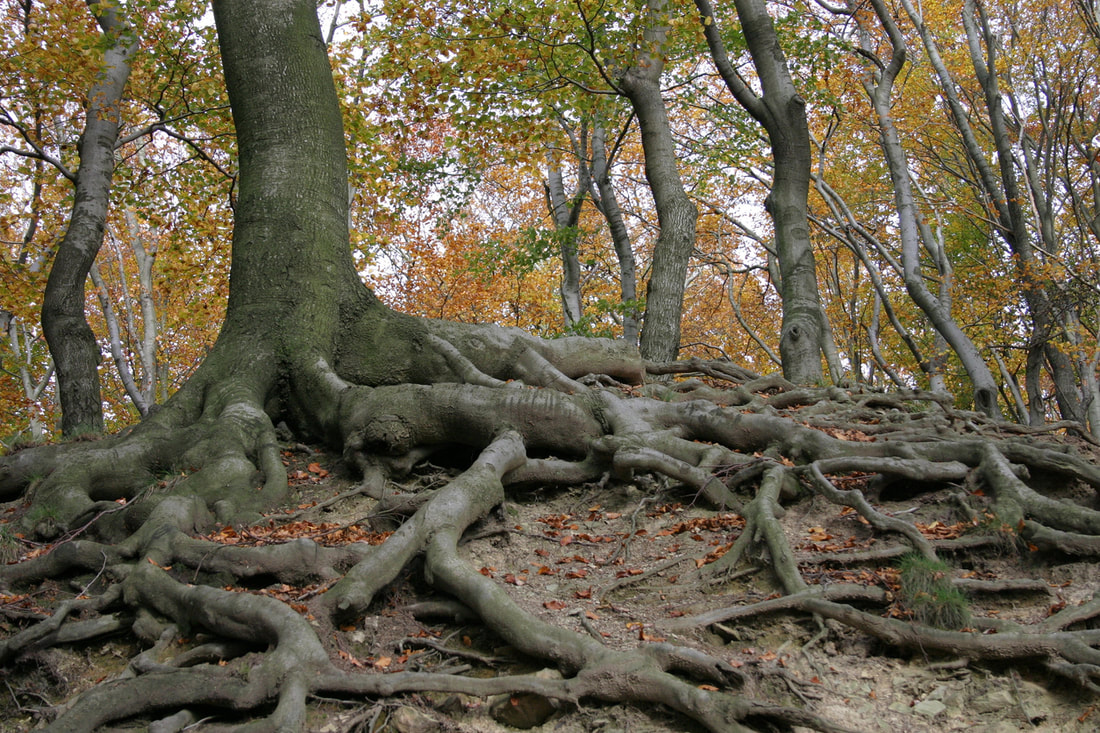
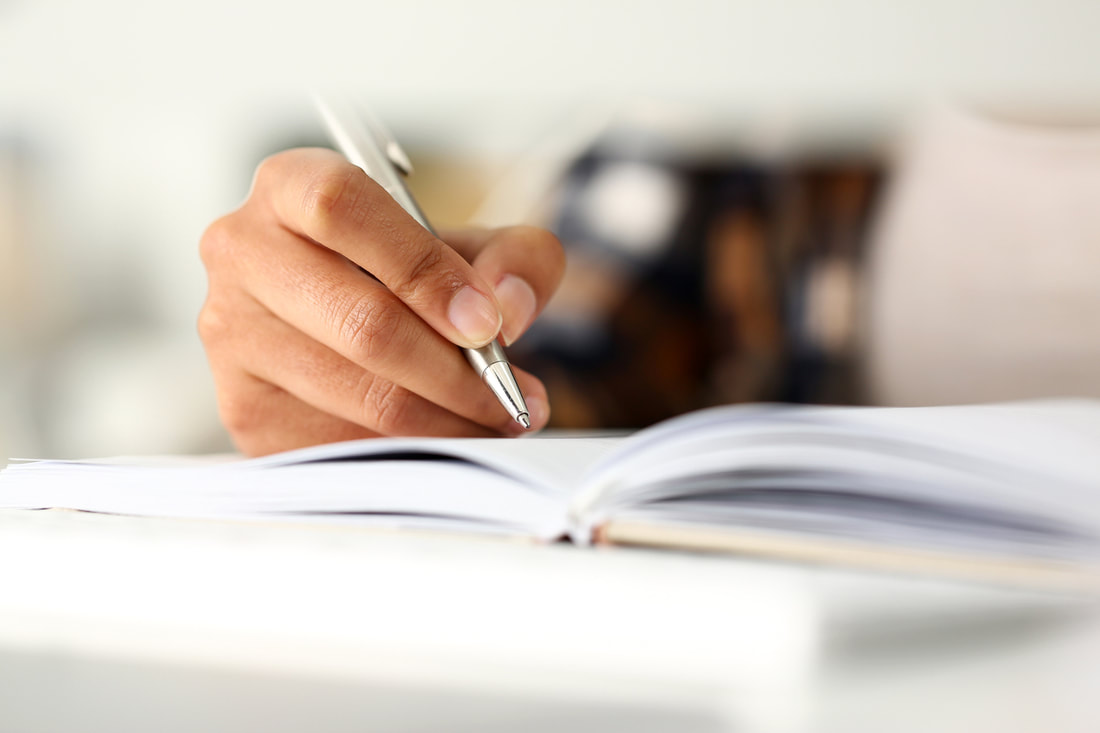
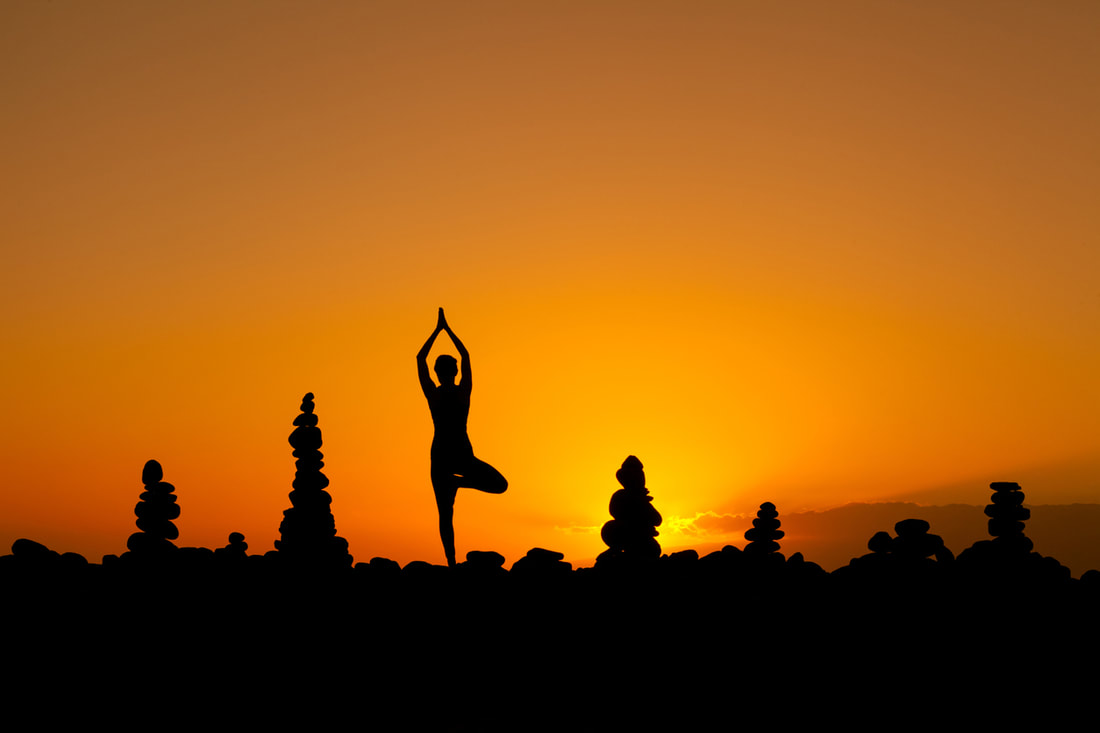

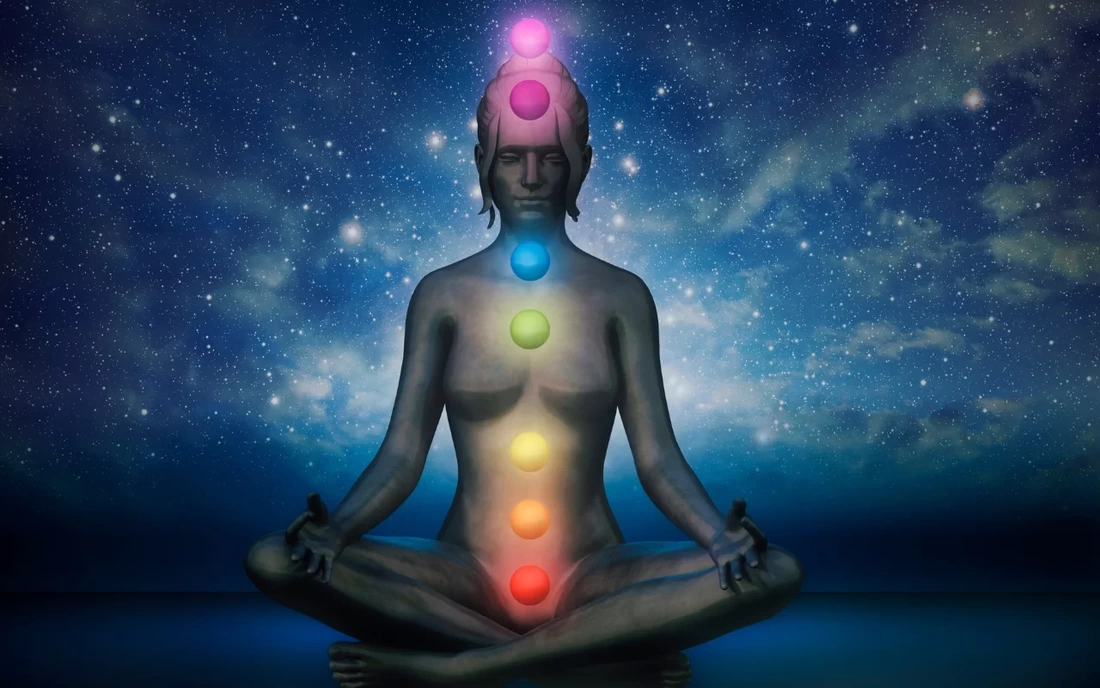
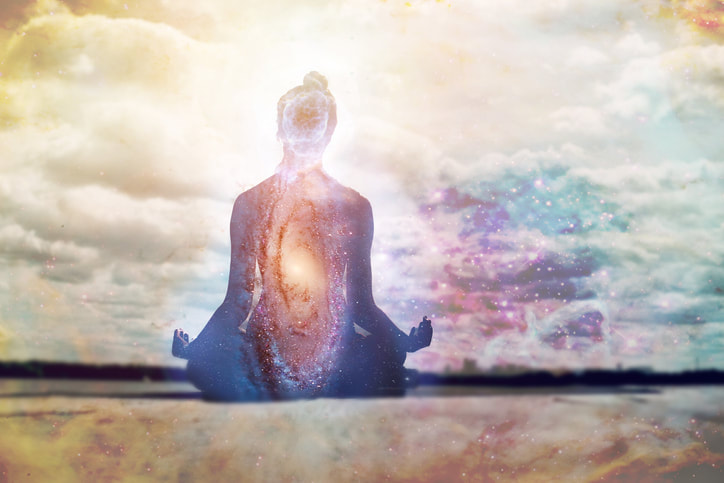

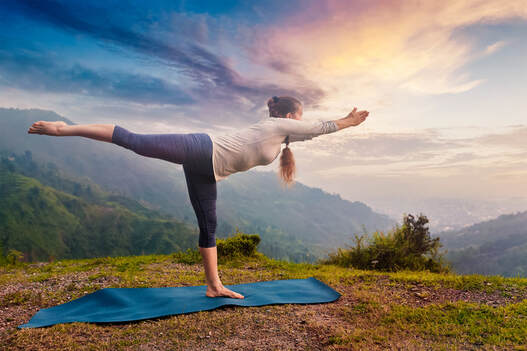
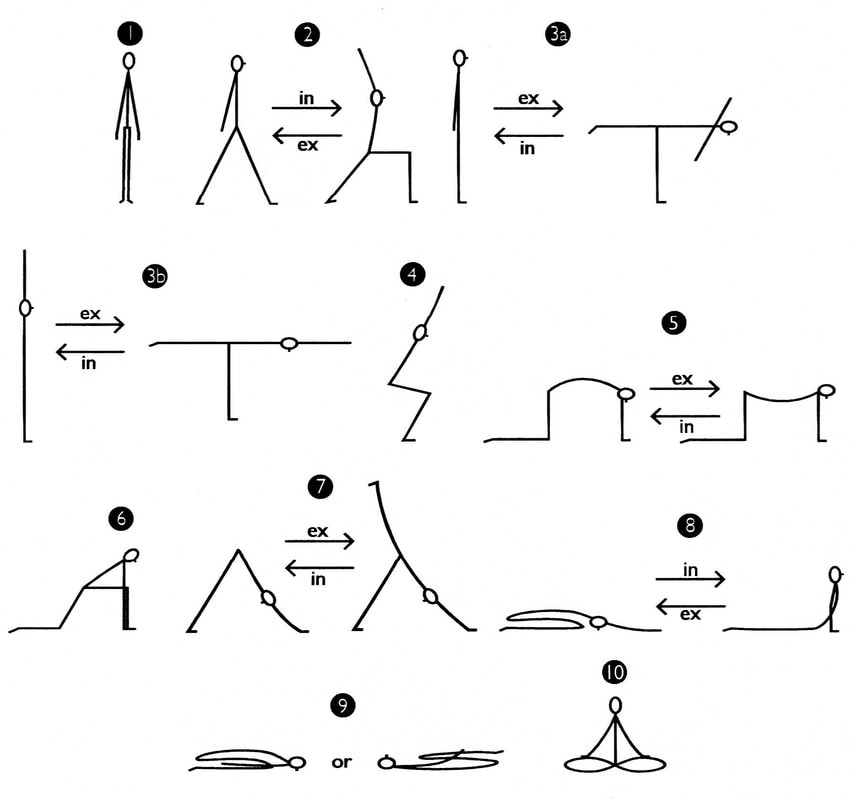
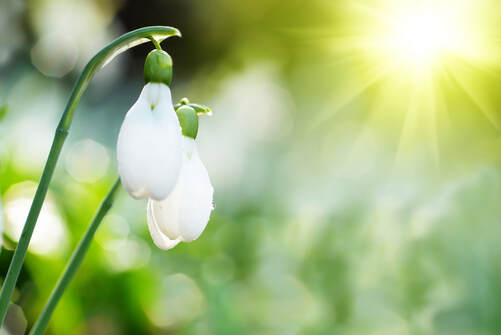
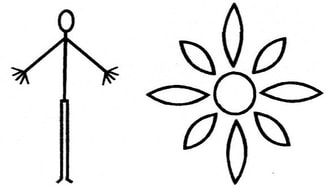
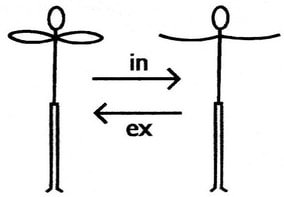
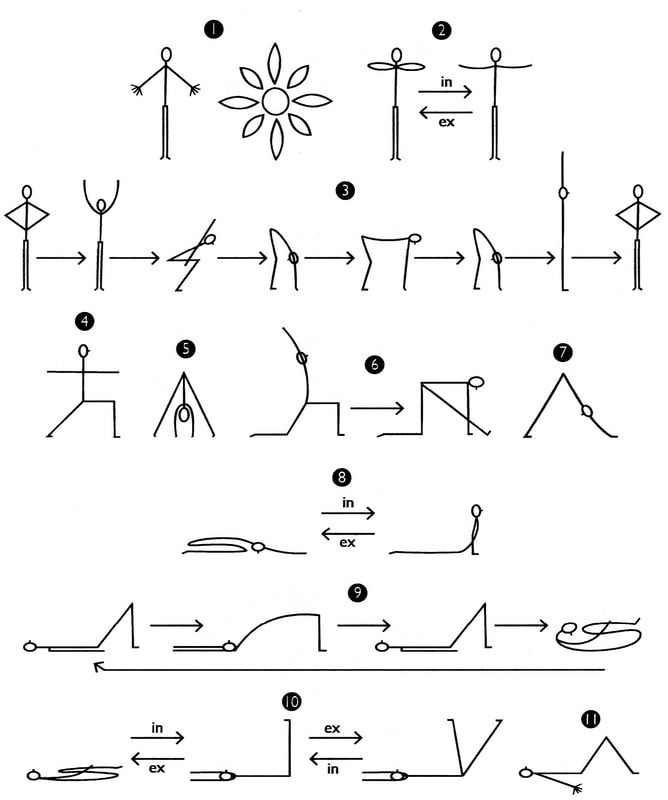





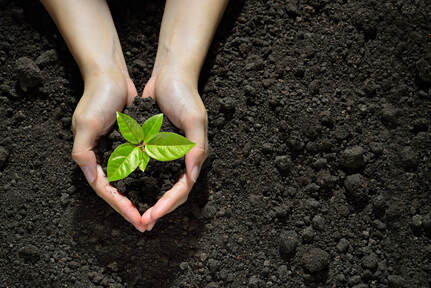
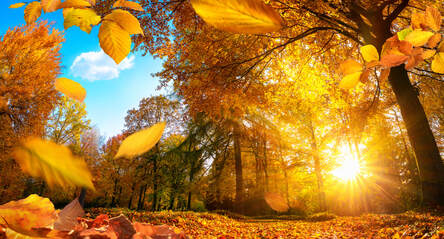
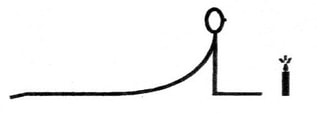
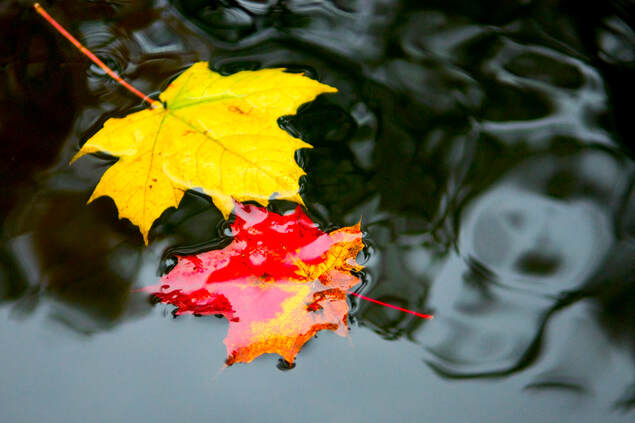
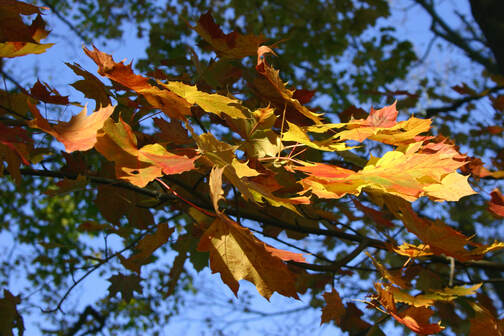
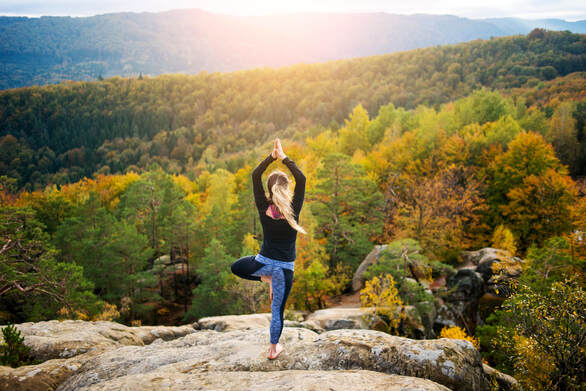
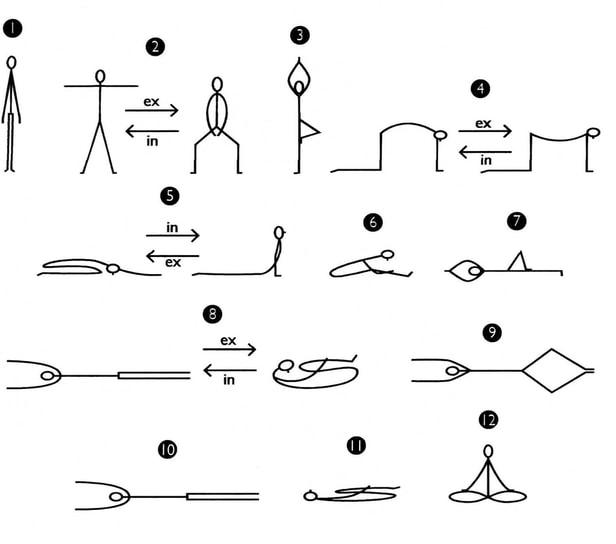
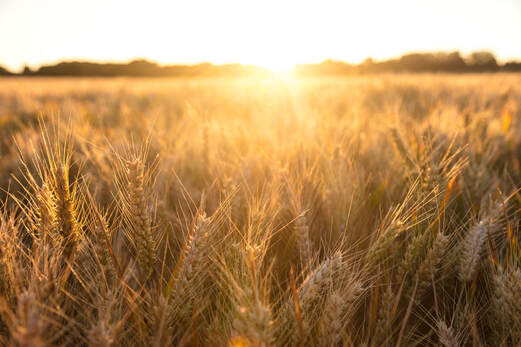
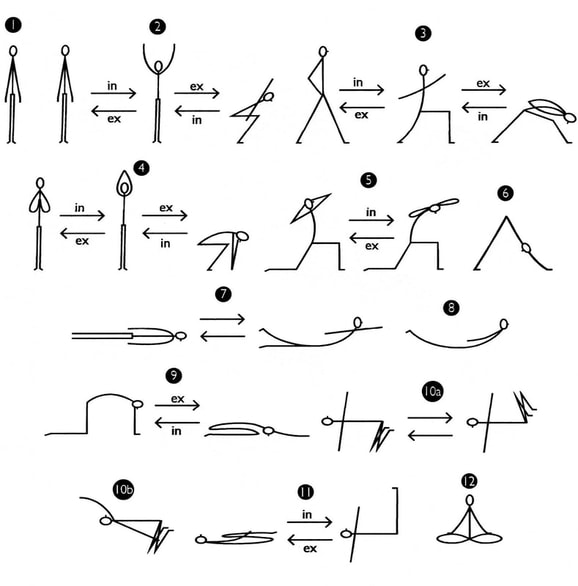
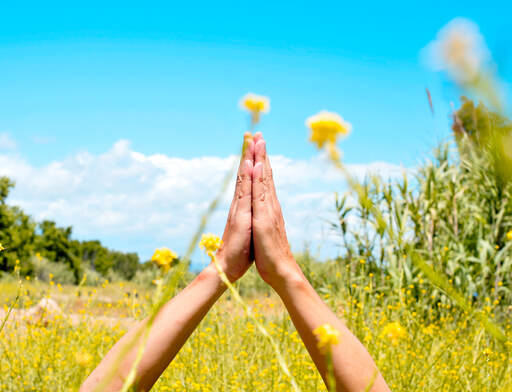
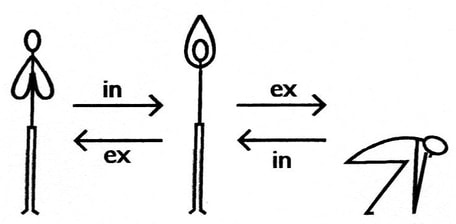

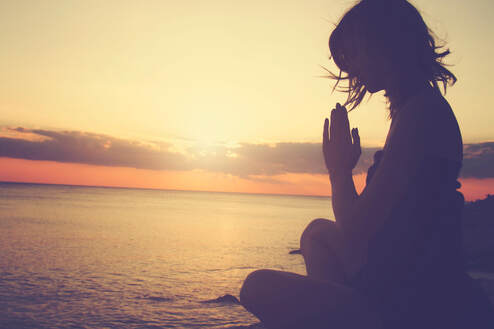

 RSS Feed
RSS Feed